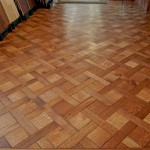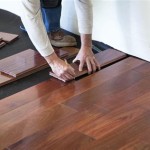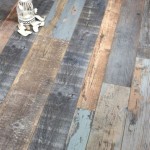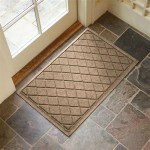Installing new hardwood floors is a great way to update the look of your home and add value to your property. Hardwood flooring is a great option for any home, as it is durable, easy to clean, and has a classic look that never goes out of style. But when it comes to the cost of installing a new hardwood floor, there are many factors to consider. Let’s take a closer look at the costs associated with installing new hardwood floors.
Types of Hardwood Floors
When it comes to hardwood floors, there are a variety of types to choose from. Solid hardwood floors are made from a single piece of wood, while engineered hardwood floors are made from several layers of wood. Laminate floors are made from a thin layer of acrylic or plastic and are less expensive than solid or engineered hardwood floors. Depending on the type of hardwood floor you choose, the cost of installation can vary.
Size and Location of the Room
The size and location of the room will also affect the cost of installing a hardwood floor. If the room is large, the cost of materials and labor will be higher. Additionally, the location of the room can affect the cost of installation. If the room is on the second floor, or in a basement or attic, the cost of installation can be higher due to the additional labor required to move materials up and down stairs.
Subfloor Preparation
The cost of installing a new hardwood floor can also be affected by the condition of the existing subfloor. If the subfloor is in good condition, the cost of installation will be lower. However, if the subfloor needs to be replaced or repaired, the cost of installation will be higher.
Labor Costs
The cost of installation can also be affected by the complexity of the job and the type of labor required. Hiring professionals to install a new hardwood floor will cost more than doing it yourself, but the job will be done correctly and quickly. Additionally, the type of hardwood flooring you choose will also affect the cost of labor, as some types require special tools and techniques to install.
Additional Expenses
In addition to the cost of materials and labor, there are other expenses to consider when installing a new hardwood floor. These include the cost of delivery and pickup of materials, the cost of rental tools, and the cost of additional supplies such as adhesive, nails, and sealant. Additionally, the cost of cleaning and refinishing the floor after installation and the cost of repairs due to accidental damage should also be factored into the cost of installation.
Conclusion
When it comes to installing a new hardwood floor, the cost can vary depending on the type of flooring you choose, the size and location of the room, the condition of the subfloor, and the type of labor required. Additionally, there are other expenses to consider, such as delivery and pickup of materials, rental tools, and additional supplies. With careful planning and budgeting, you can find the perfect hardwood floor for your home that fits within your budget.















Related Posts








